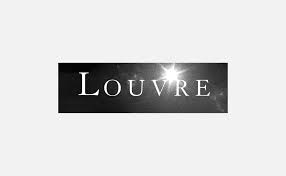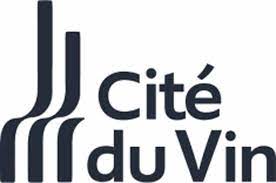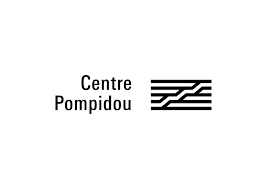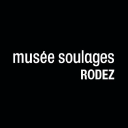Summary
The global museum market, which encompasses not only museums but also historical sites, zoos, and parks, was valued at $41.84 billion in 2020. Despite the challenges posed by the COVID-19 pandemic, the market was expected to grow by 16%, reaching $48.53 billion in 2021, with further growth anticipated to hit $63.84 billion by 2025, at a CAGR of 7%. North America led the market share in 2020 with 33%, followed by Asia-Pacific at 29% and Europe. The impact of the pandemic was notably severe, particularly for French museums, which saw a drastic drop in attendance and revenue in 2020. The Louvre, for example, experienced a 72% decrease in visitors, only welcoming 2.7 million compared to 9.6 million in the previous year. The market size of museums in France also saw a significant decline of 47% in 2020 versus 2019, but a modest recovery of 21% the following year. Additionally, the museum sector saw a shift toward digital offerings, such as virtual tours, in response to pandemic restrictions. Museum financing remains a critical issue for the sector, with both public and private investment playing significant roles.
Trending Growth in Museum Attendance and the Prominent Role of Art Collections
The market for museums in the specified country has experienced a notable upward trajectory over the past decade, particularly in regions rich in art collections. Museum attendance soared to over 65 million visitors. This growth has not been consistent, with fluctuations characterized by an initial surge, a temporary dip between 2014 and 2016, and a rebound in subsequent years until 2019. A deeper look into the visitor statistics reveals that over one-third of the museums cater to art collections, constituting about 34%, and a slightly lower proportion, around 32%, is dedicated to history.
However, these figures contrast with the actual distribution of visitors, wherein art museums account for roughly 65% of total museum-goers, indicating their significant pull factor despite being only one-third of the total museums. Conversely, history museums draw around 18% of visitors, and society, civilization, nature, science, and technology museums attract 17%.
From a geographical perspective, the Île-de-France region stands as a cultural epicenter, claiming about 57% of the total museum attendance, implying that more than half of museum visits occur in this region alone. This concentration is further accentuated by the fact that just five museums within the region command over 35% of total national museum visits. Looking at the segmented data by regions, regions like Brittany and Normandy revealed noteworthy progress, with visitor numbers surging by around 40% to 50%. Museums in the French overseas departments, however, see relatively lower attendance, hinting at the geographical disparities influencing demand in the market.
The analysis of museum-goers’ profiles sheds light on a few trends. Youth, particularly those between 15 and 19 years old, are the most frequent museum attendees, with around 35% visiting museums annually. Seniors over 75 years old are the least likely to visit museums, bringing up the lower end of the attendance spectrum at 16%. Women have a slightly higher museum attendance rate than men, signaling gendered differences in cultural consumption. Educational attainment is directly correlated with museum visits. Individuals with higher education degrees show the highest attendance rate at over 50%, creating a stark disparity when compared to those with lower educational qualifications. Employment status also seems to influence museum attendance, with executives making up the majority of visitors at around 60%.
Prominent Institutions and Cultural Entities Shaping the French Museum Landscape
The French museum sector is comprised of a diverse array of institutions and organizations, each playing a pivotal role in preserving and presenting cultural heritage. Here are some of the noteworthy players that stand out in the landscape:
- The Louvre Museum : Arguably the most renowned museum not only in France but across the globe, the Louvre holds the prestigious title for being the most-visited museum. Its extensive collections span thousands of years and a multitude of civilizations, attracting millions of art lovers and history enthusiasts annually.
- Centre Pompidou : Known for its high-tech architectural design, the Centre Pompidou houses the National Museum of Modern Art and is a hub for contemporary art lovers. The center offers a multidisciplinary approach to culture, intertwining visual arts, literature, music, cinema, and more.
- Musée d'Orsay : Housed in a former railway station, the Musée d'Orsay is a treasure trove of French art dating from 1848 to 1914. It holds the largest collection of impressionist and post-impressionist masterpieces worldwide, featuring works by artists such as Monet and Van Gogh.
- Cité des Sciences et de l'Industrie : As the largest science museum in Europe, this Parisian museum is geared towards exploration, innovation, and the dissemination of scientific knowledge. Its interactive exhibits and planetarium are especially popular with younger audiences.
- Culturespaces : As a private company, Culturespaces manages numerous historical monuments and museums across France. It plays a crucial role in the promotion of art and heritage through the management and curation of diverse cultural sites.
- Micro-Folies : A unique project under the cultural democracy initiative, Micro-Folies brings museum collections to life through digital means. It aims to make culture more accessible to the public, particularly in underserved communities, by offering digital access to seminal works from France's national collections.
- MUCEM (Museum of European and Mediterranean Civilizations): Based in Marseille, MUCEM is dedicated to showcasing the many facets of Mediterranean civilization, merging anthropology, history, archaeology, and contemporary art within its ambit.
- Louvre-Lens: A satellite branch of the Louvre, this museum in the Pas-de-Calais region, further decentralizes access to art, bringing masterpieces of the iconic Parisian museum closer to audiences outside the capital.
to understand this market
Detailed content
 Inforamtion
Inforamtion
- Number of pages : 30 pages
- Format : Digital and PDF versions
- Last update : 25/03/2022
 Summary and extracts
Summary and extracts
1 Market overview
1.1 Definition and scope of the study
Museums are establishments in which collections of objects of historical, technical, scientific or artistic interest are assembled and classified for the purpose of their conservation and presentation to the public.
The global museum market, hard hit by the health crisis, is expected to grow by 7% per year by 2025. North America is the largest market for museums. Although it is in first place, the Louvre is the only French museum in the world's Top 10.
In France, the sector's revenue rose sharply between 2015 and 2019 (+32% over the period), before dropping in 2020 due to the health crisis that led to the closure of museums. The national market is characterized by a strong increase in the number of visitors over the last decade, particularly for art museums and in Parisian museums, which concentrate more than half of the visits. This increase in attendance is partly linked to the growing success of permanent exhibitions. In addition, foreign visitors represent half of all museum attendance in France. This dependence accentuated the difficulties of museums during the health crisis. The sector is also very dependent on funding, especially public investment.
The trend in the sector is towards the multiplication and modernization of the offer. These phenomena have been accelerated by the health crisis.
1.2 Global market
The global museum market was valued at US$ **.** billion in **** and is expected to reach US$ **.** billion by ****, growing at a CAGR of **%. Market revenues are expected to reach US$**.** billion by ****, growing at a CAGR of *%. However, these figures do not only include museums, but also historical sites, zoos and ...
1.3 National market
The activity of museums can be identified under two codes of the NAF nomenclature:
**.**Z: "Management of museums" **.**Z : "Management of historical sites and monuments and similar tourist attractions"
The activity of Management of museums (***) includes :
- management of museums of all kinds:
museums of art, silverware, furniture, costumes, ceramics, ...
1.4 Foreign trade
The first item of trade in cultural goods is art, collectibles and antiques, which includes: paintings, drawings and collages, statues and sculptures, engravings, original prints and lithographs, collectibles and antiques over *** years old.
The following graph shows the exports and imports for this item of cultural goods in ****, the pandemic year, ...
2 Analysis of the demand
2.1 An increase in museum attendance, driven by art collections and the Île-de-France region
Museum attendance in France has increased significantly over the last decade, from **.* million visitors in **** to **.* million visitors in ****, an increase of **.*% over the period. This increase was even greater between **** and ****, when attendance rose by **.*% in five years, before falling by *.*% between **** and **** and then rising again until ****.
Evolution of ...
2.2 Profile of museum visitors
The Ministry of Culture publishes a survey every decade on cultural practices in metropolitan France. In ****, **** people constituted the sample for this study.
The following graph shows the proportion of the population that attended a museum in the past year between the early ****s and the late ****s. The proportion of ...
2.3 Tourism as a major determinant of demand, and the impact of covid-19 on visitation
Half (***) of visitors are locals[***]. This high proportion of international tourists reflects the importance of foreign customers for museums. However, in ****, with the pandemic, international tourists represented only *% of visitors.
The vast majority (***) of tourists to France come from Europe. America and Asia are home to **% and *.*% of international tourists ...
2.4 The case of exhibitions, catalysts of demand
According to the Ministry of Culture,museum attendance is very much linked to temporary exhibitions and other cultural events. Indeed, the cumulative attendance of all temporary exhibitions in museums in France is estimated at more than **.* million entries in ****[***], or **% of total museum attendance. This phenomenon seems to be increasing in ...
3 Market structure
3.1 A concentration of the sector
According to the Ministry of Culture, at the end of ****, there are **** museums that have the designation "Musée de France". This designation can be granted to museums belonging to the State or to public or private non-profit legal entities. Moreover, a museum is considered to be "any permanent collection of ...
3.2 Public and private financing, a major challenge for the structuring of the sector
The financing of museums is a central element for the structuring of the sector. The financing of culture in general can be carried out by different actors that can be public (***)
Public financing :
The following graph shows the evolution of the budget of the Ministry of Culture allocated to Heritage within ...
4 Analysis of the offer
4.1 Typology of prices
The median price of visits to museums, exhibitions and monuments in **** was **€. In detail, **% of visitors paid less than **€ and **% of visitors paid less than **€.[***]
Price is a factor that can cause people to give up visiting museums. In fact, **% of French people gave up at least one visit in **** because ...
4.2 Supply trends
Blockbuster exhibitions
Temporary exhibitions accounted for **% of museum admissions in **** and more and more exhibitions are attracting large numbers of visitors (***). This type of exhibition allows museums to increase their attendance and consequently their revenues. They also allow to improve and especially to extend the reputation of a museum and are ...
4.3 Trend of the offer: museums dedicated to local products
The gastronomy sector in France is not limited to the restaurant industry. For example, French gastronomy, which is part of the intangible cultural heritage of humanity[***]
The following table lists some of the French museums dedicated to gastronomy:
The museums related to gastronomy are located in the "cradle" territories of the ...
5 Regulation
5. Regulation
Appellation Musée de France :
Articles L***-* to L***-** of the Heritage Code provide a framework for the appellation "Musée de France".
Established by the law of January *, **** on the museums of France, the appellation "Musée de France" can be granted to museums belonging to the State ...
6 Positioning of the actors
6. Segmentation
- Culturespace
- Musée du Louvre
- MUCEM
- Cité du Vin
- Centre Pompidou
- Tempora Expo
- Réunion des Monuments Nationaux -RMN Grand Palais
- Centre des Monuments Nationaux CMN
- Musée d'Orsay
- Musée de la Marine
- France museums
- Musée Soulages
- Château de Versailles
- Delight Data
- The Packengers
- Arteum Services
- La Tour Eiffel
 List of charts
List of charts
- Evolution of the attendance of the museums of France
- Distribution of museums by type of collection
- Distribution of museum attendance by type of collection
- Répartition et fréquentation des musées par type de collection
- Proportion of people who visited a museum in the last 12 months by age group
All our studies are available online in PDF format
Take a look at an example of our research on another market!
Latest news
Companies quoted in this study
This study contains a complete overview of the companies in the market, with the latest figures and news for each company. :
 Choosing this study means :
Choosing this study means :
Access to more than 35 hours of work
Our studies are the result of over 35 hours of research and analysis. Using our studies allows you to devote more time and added value to your projects.
Benefit from 6 years' experience and over 1,500 industry reports already produced
Our expertise enables us to produce comprehensive studies in all sectors, including niche and emerging markets.
Our know-how and methodology enable us to produce reports that offer unique value for money.
Access to several thousand articles and paid-for data
Businesscoot has access to all the paid economic press as well as exclusive databases to carry out its market research (over 30,000 articles and private sources).
To enhance our research, our analysts also use web indicators (semrush, trends, etc.) to identify market trends and company strategies. (Consult our paying sources)
Guaranteed support after your purchase
A team dedicated to after-sales service, to guarantee you a high level of satisfaction. +44 238 097 0676
A digital format designed for our users
Not only do you have access to a PDF, but also to a digital version designed for our customers. This version gives you access to sources, data in Excel format and graphics. The content of the study can therefore be easily retrieved and adapted for your specific needs.
 Our offers :
Our offers :
the museum market | France
- What are the figures on the size and growth of the market?
- What is driving the growth of the market and its evolution?
- What is the positioning of companies in the value chain?
- Data from several dozen databases
Pack 5 études (-15%) France
- 5 études au prix de 75,6€HT par étude à choisir parmi nos 800 titres sur le catalogue France pendant 12 mois
- Conservez -15% sur les études supplémentaires achetées
- Choisissez le remboursement des crédits non consommés au terme des 12 mois (durée du pack)
Consultez les conditions du pack et de remboursement des crédits non consommés.
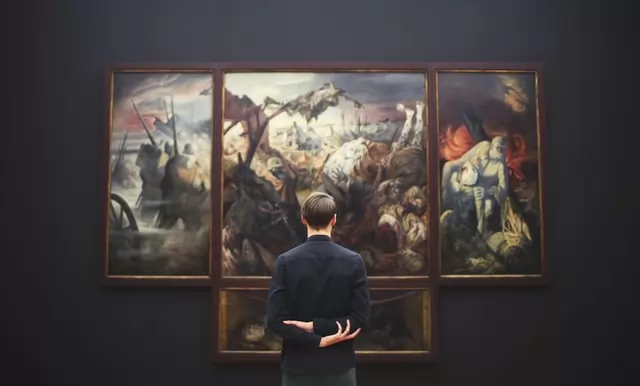




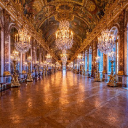 château de Versailles: criticism from the Court of Auditors | Versailles criticized by the Court of Auditors - 13/11/2023
château de Versailles: criticism from the Court of Auditors | Versailles criticized by the Court of Auditors - 13/11/2023
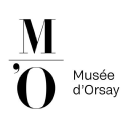 The Musée d'Orsay reinvents itself. - 18/06/2023
The Musée d'Orsay reinvents itself. - 18/06/2023
 Diving into the heart of the oceans: Musée de la Marine - 18/06/2023
Diving into the heart of the oceans: Musée de la Marine - 18/06/2023

